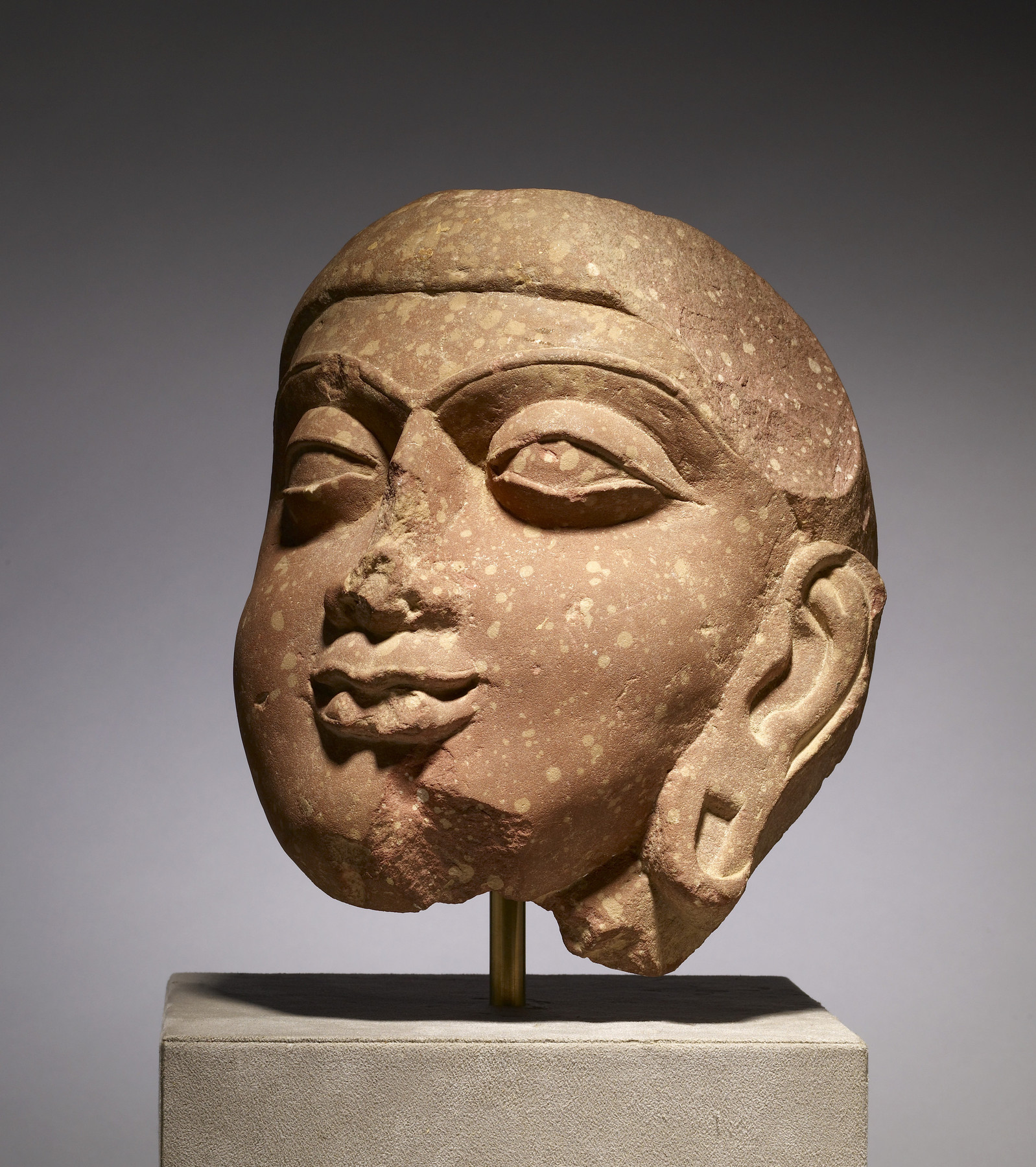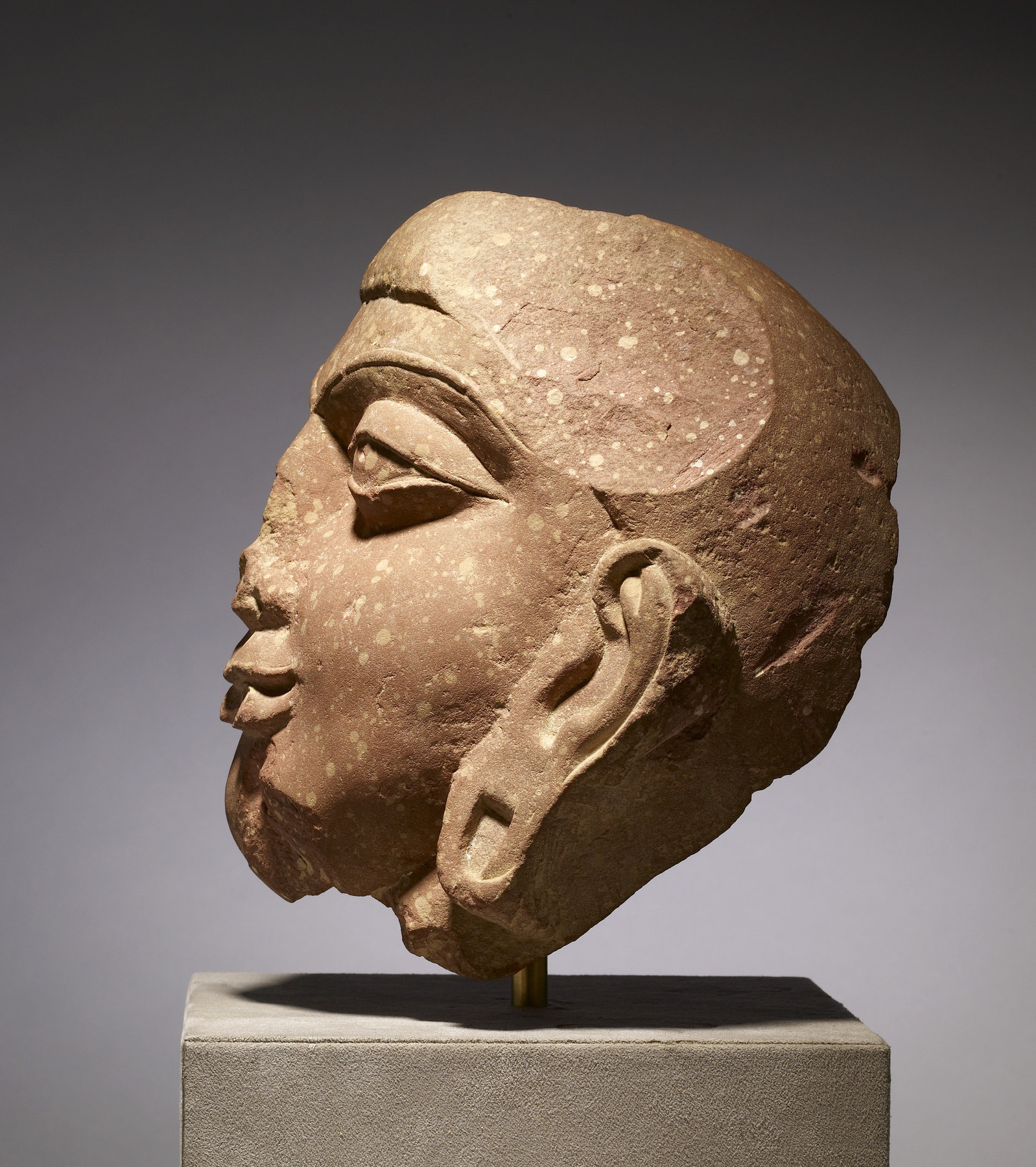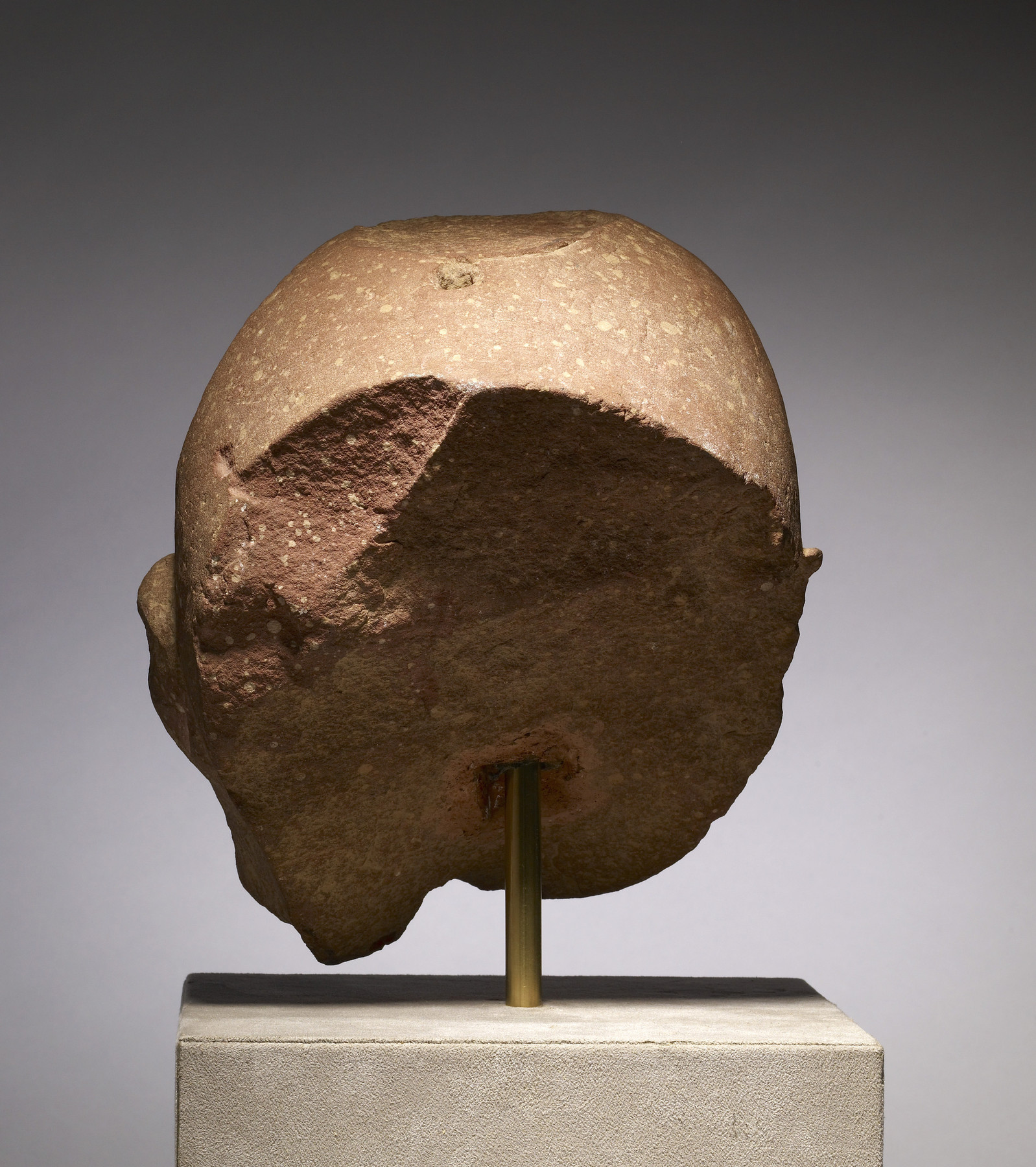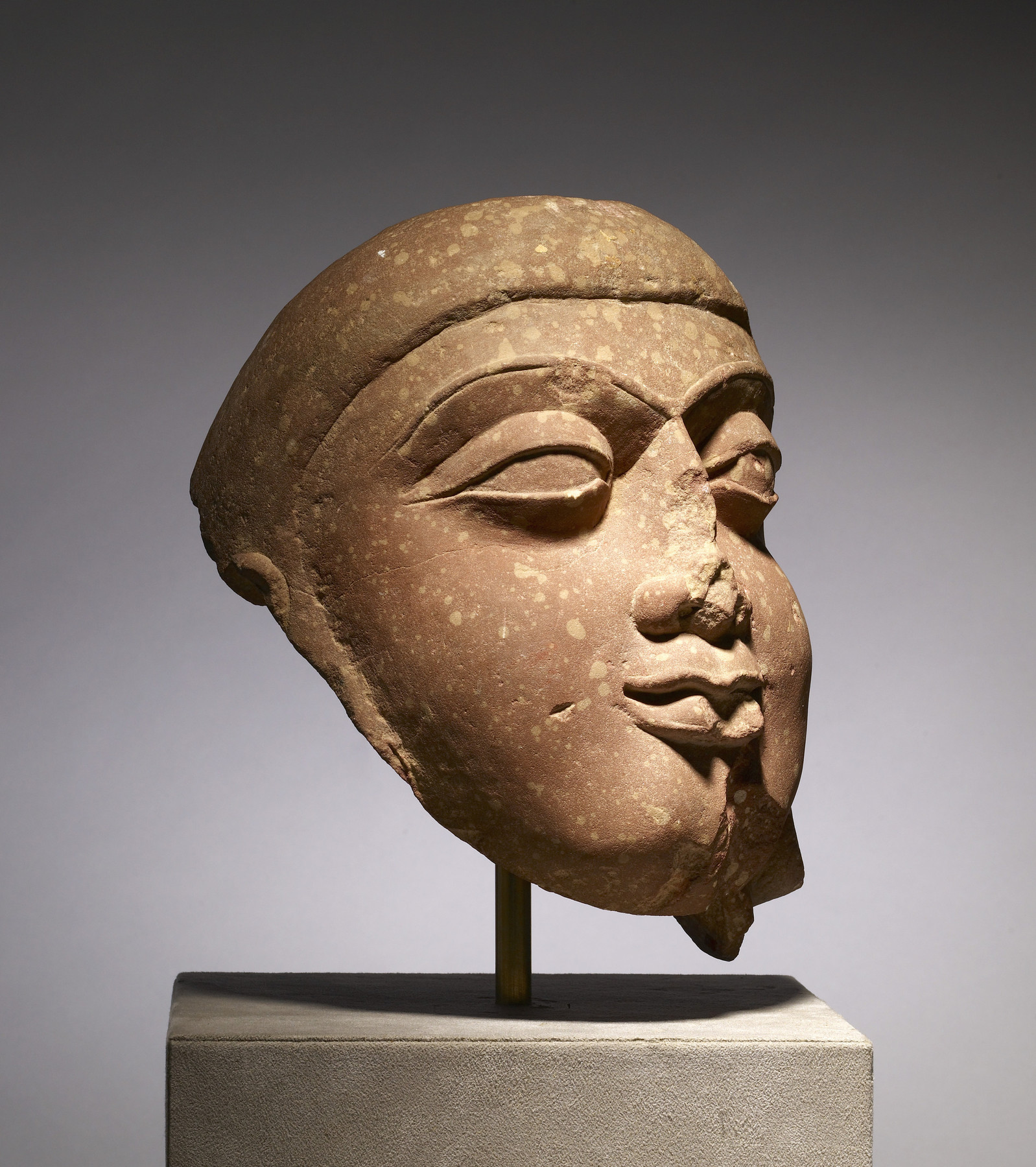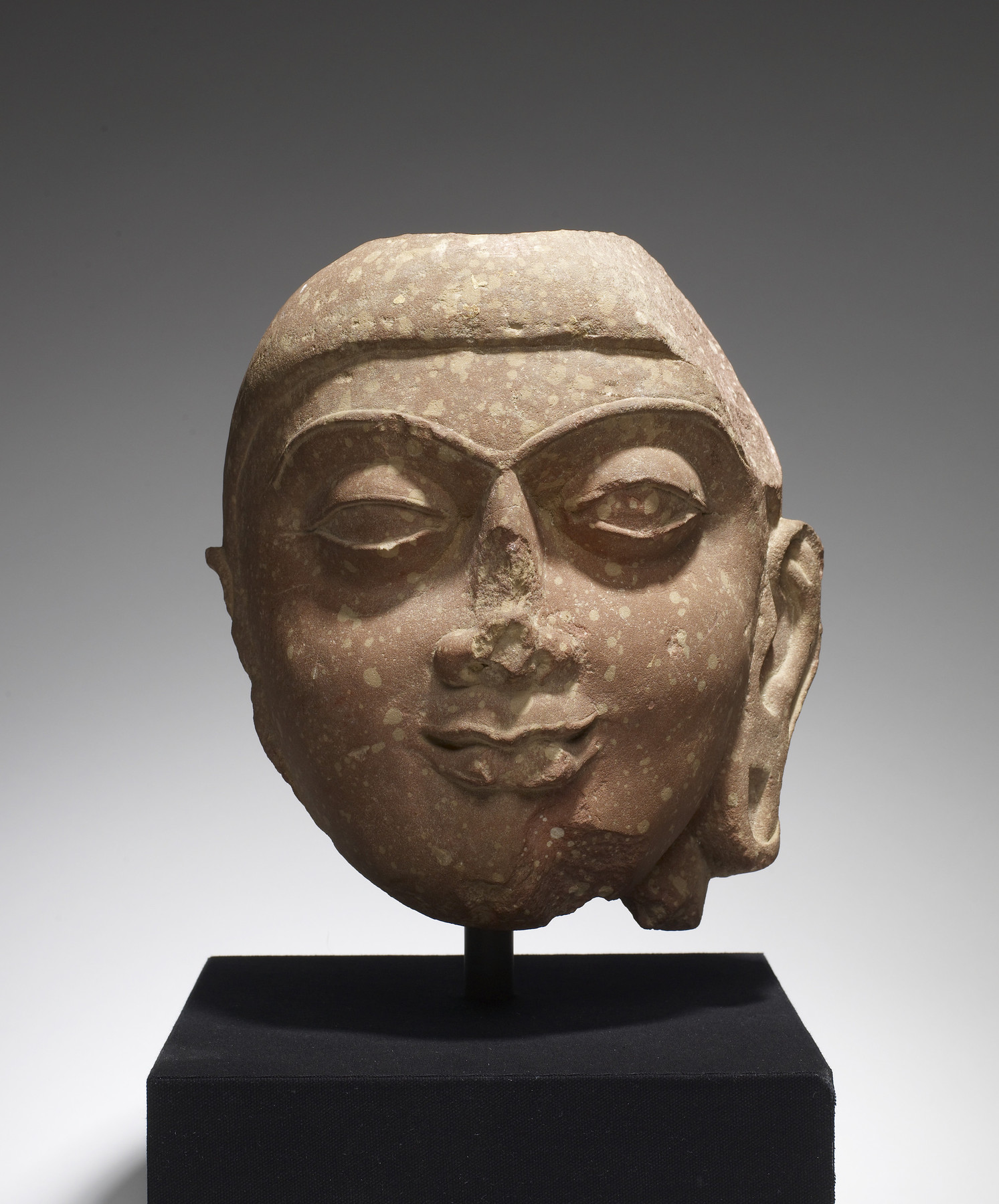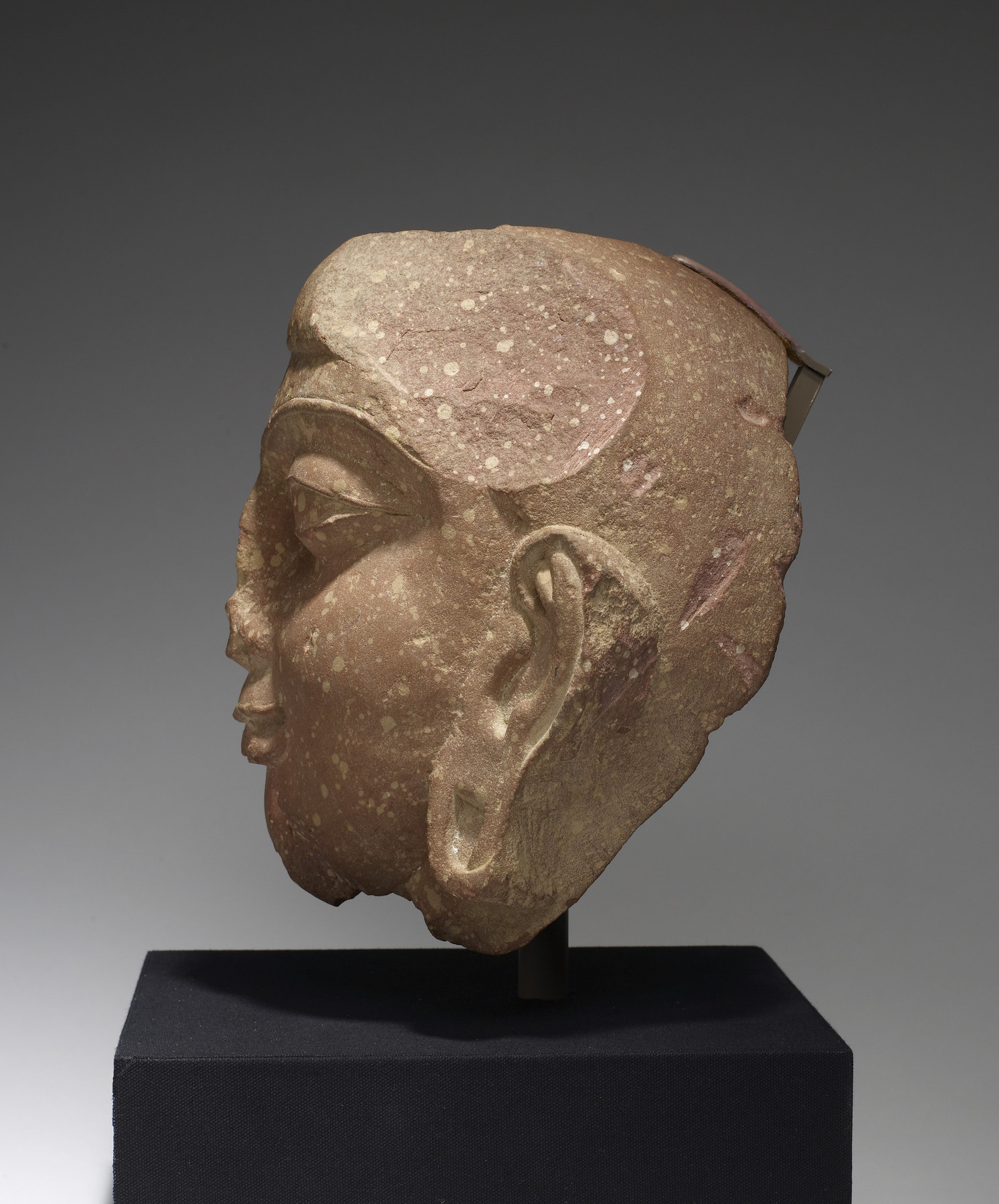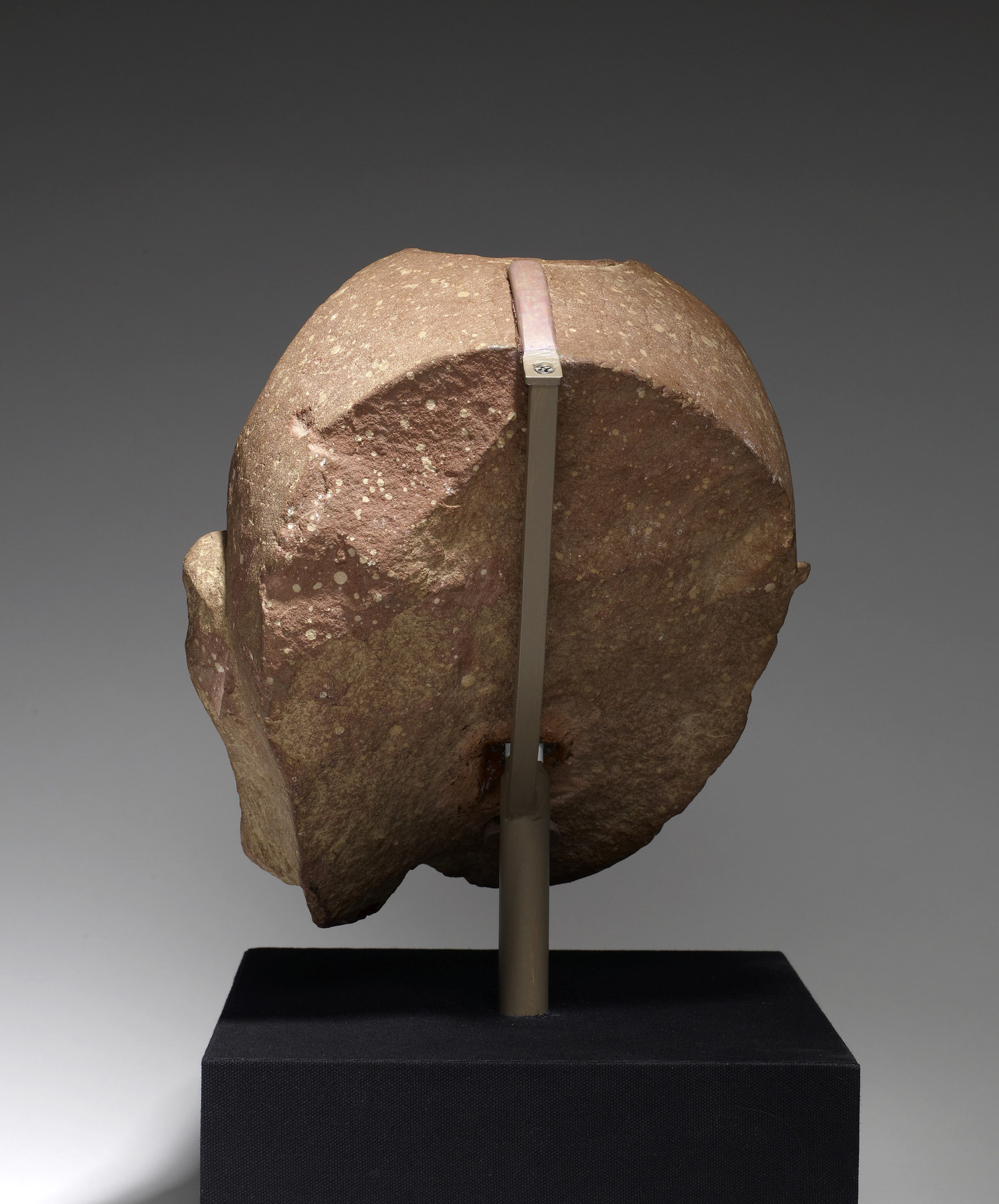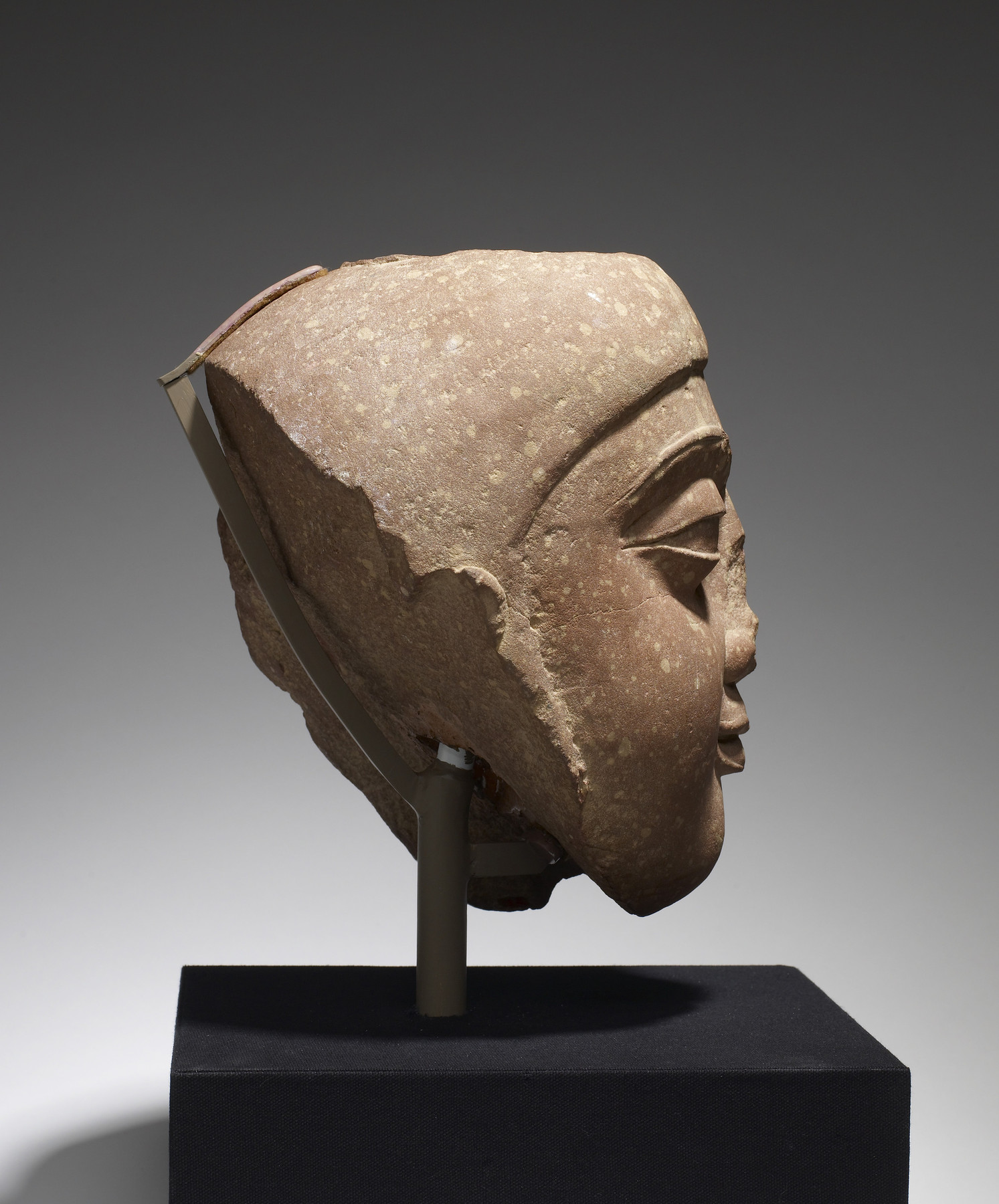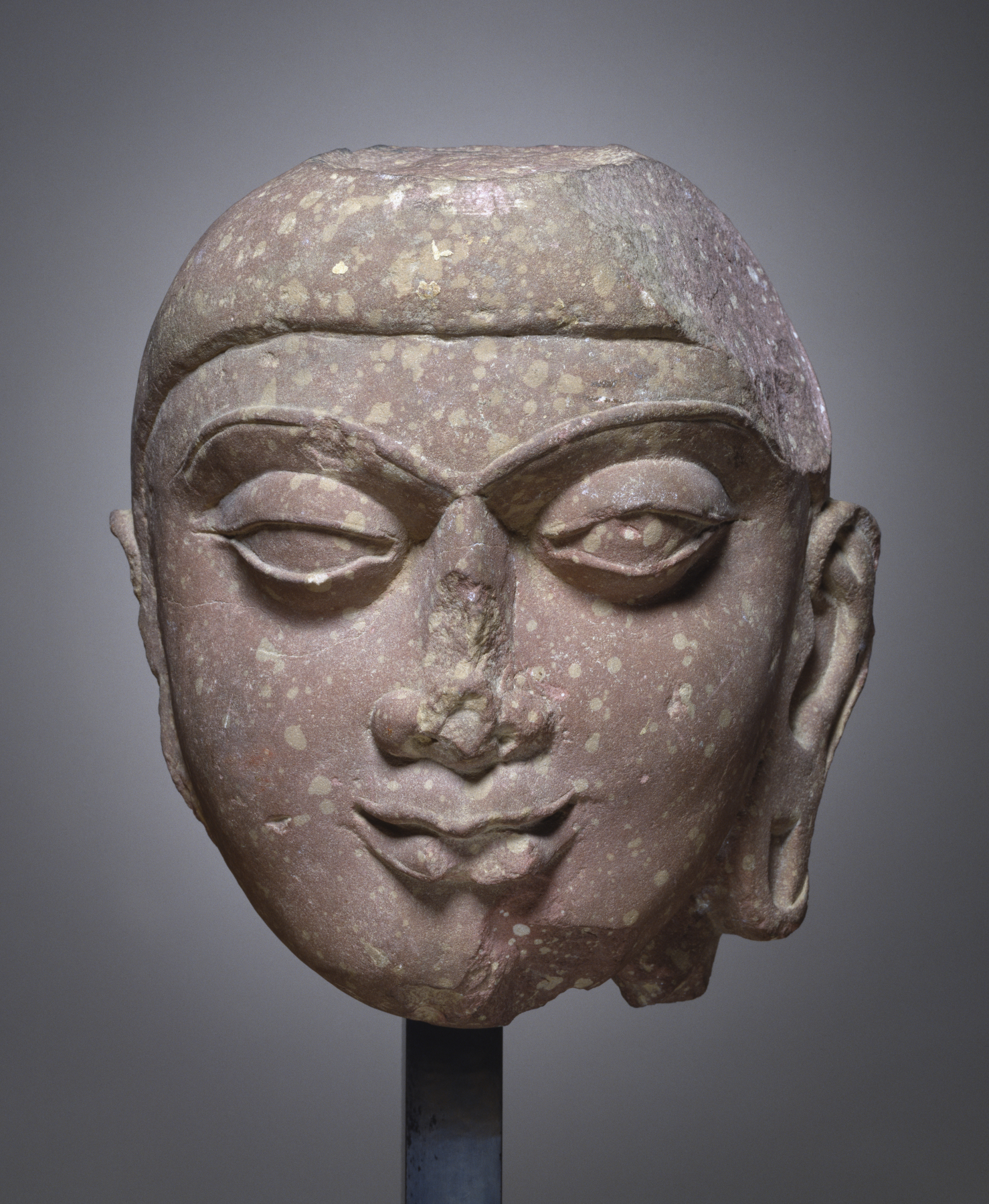Head of Buddha or Jina
(India, Nepal, and Tibet)
Depicted with a serene gaze and a gentle smile, this figure may represent a Buddha or a Jina. Both Buddhas and Jinas are spiritually liberated, enlightened beings regarded as the supreme teachers and moral exemplars of their respective religious traditions. Buddhist and Jain communities thrived alongside one another in the region of Mathura (a city in north-central India) in the early first millennium, and visual representations of the beings revered by each share many features. For example, both Buddhas and Jinas have elongated earlobes, regarded as one of many auspicious physical characteristics of a great being. They are not adorned in jewelry, for both Buddhas and Jinas renounce wealth and luxury in their pursuit of spiritual freedom. When this figure was fully intact his identity would have been clearer, for the heads of Buddhas are crowned with an "ushnisha," an auspicious cranial protuberance that is absent from the Jinas of this early period.
Provenance
Provenance (from the French provenir, 'to come from/forth') is the chronology of the ownership, custody, or location of a historical object. Learn more about provenance at the Walters.
Sale, Sotheby's, New York, September 20 1985, lot 325; Private collection; given to Walters Art Museum, 1987.
Geographies
India, Mathura (Place of Origin)
Measurements
H: 10 5/8 × W: 9 3/16 × D: 7 1/2 in. (27 × 23.3 × 19 cm)
Credit Line
Anonymous gift, 1987
Accession Number
In libraries, galleries, museums, and archives, an accession number is a unique identifier assigned to each object in the collection.
In libraries, galleries, museums, and archives, an accession number is a unique identifier assigned to each object in the collection.
25.90


